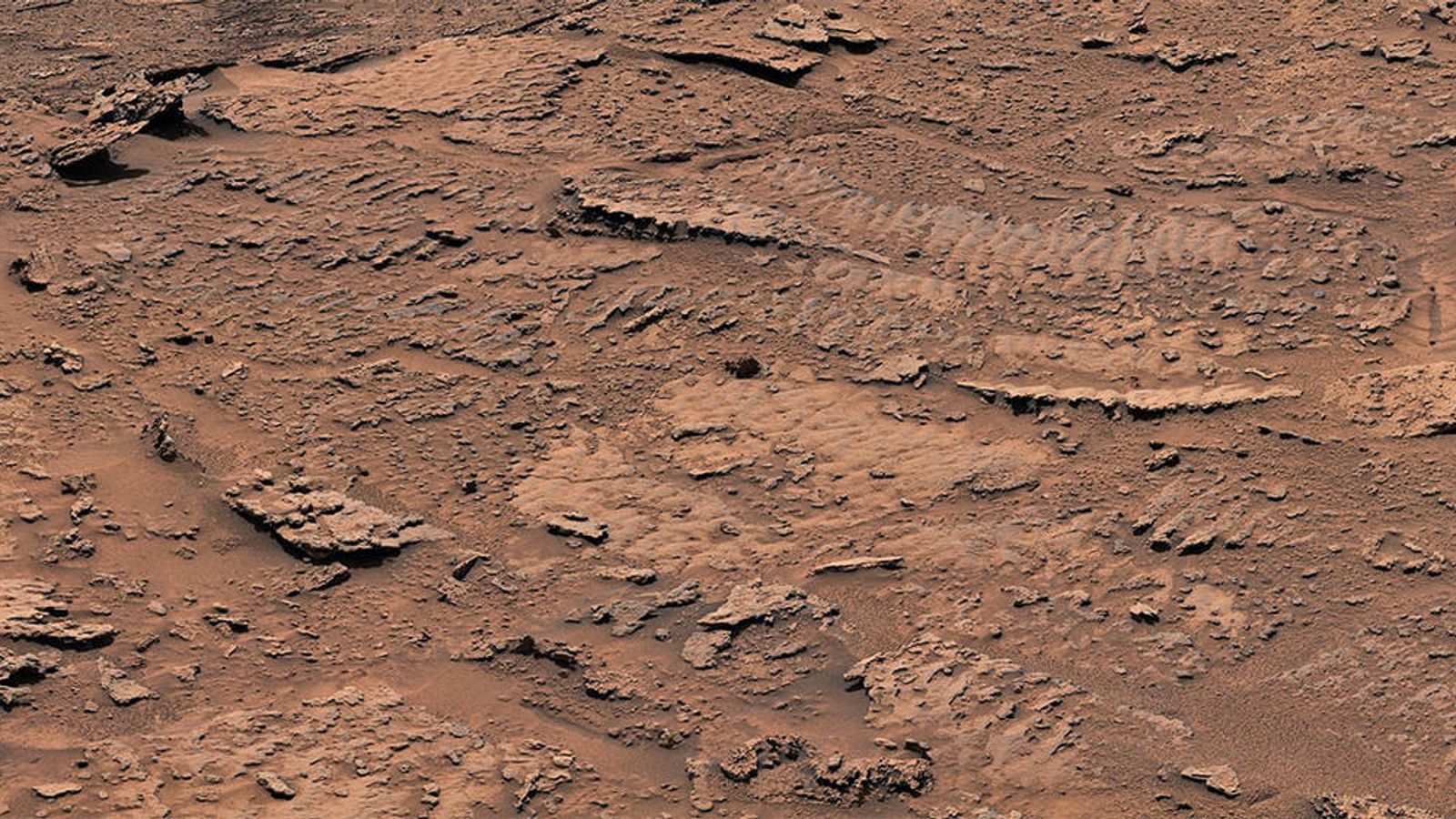NASA’s Curiosity rover has found evidence that lakes once occupied an unexpected region of Mars.
The US space agency reported the discovery of rippled rock textures, suggesting large bodies of water existed in an area that scientists had thought would be drier.
“This is the best evidence of water and waves that we’ve seen in the entire mission,” said one of the researchers.
Ashwin Vasavada, the Curiosity’s project scientist at NASA‘s Jet Propulsion Laboratory in California, said the rover previously climbed through thousands of feet of lake deposits “and never saw evidence like this”.
Curiosity has been navigating the foothills of Mount Sharp, a three-mile-high mountain that was once covered in streams and lakes, since 2014.
The mountain is made up of layers, with the oldest at the bottom and the youngest at the top, meaning Curiosity is effectively travelling through time in its bid to study the planet’s history.
Ancient Mars was far more akin to Earth, with a warmer climate and lots of water, but now it’s a freezing desert.
Read more:
Asteroid triggered ‘mega-tsunami’ on Mars
Ukraine war puts Europe’s Mars mission on hold
The newly-discovered rippled rock textures were found nearly half a mile above the mountain’s base, preserved in a thin layer of dark rock that stands out from the rest of the mountain.
It’s so hard that the rover has been unable to drill through it.
The rippled rock textures are a sign of water because billions of years ago, waves on the surface of a shallow lake would have stirred up sediment at the bottom – over time creating the ripple effect.
NASA says the area would have provided a rich environment for microorganisms, should any have existed.
‘Most recent evidence we’ll ever see’
Scientists hope to find more of the dark rock that’s soft enough to drill into, but the intrepid rover has also spotted further evidence of water elsewhere.
In a valley called Gediz Vallis, debris has been sighted that was washed down by wet landslides on Mount Sharp, including from boulders that scientists suspect were the size of cars.
Mr Vasavada said it was “probably the most recent evidence of water that we’ll ever see”.
It is hoped that Curiosity – which has remained operational after more than 10 years on the planet’s surface – will get another look at the valley later this year while it continues surveying Mount Sharp.
Meanwhile, its successor rover Perseverance is also hard at work on the red planet – last week it finished building a rock depot that will help return samples to Earth.






